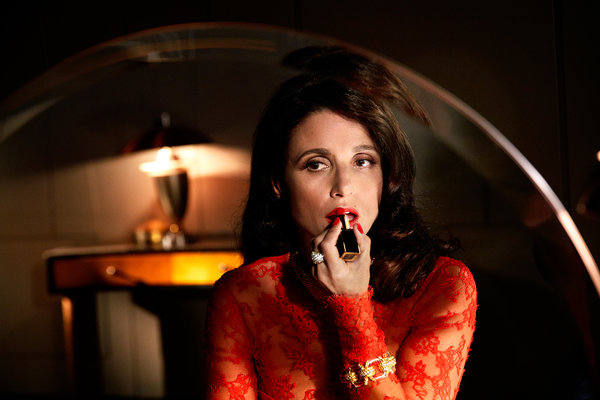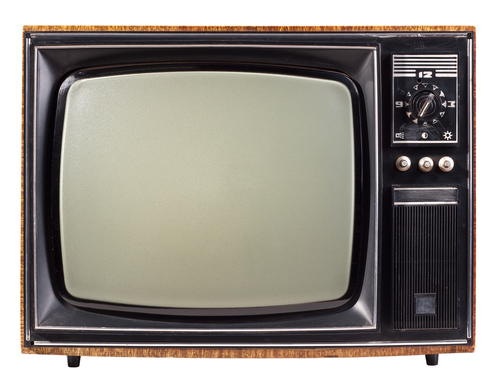|
The Big Picture Strikes Back
Posted on: 12/02/13
 By A. O. SCOTT Like a character who develops a discreet but noticeable cough at the end of the first act, the movies have been dying for a long time. The latest chapter in their decline — which began, depending on who is telling the story, with the introduction of sound, the rise of television, the fall of the old studios, the spread of home video or the arrival of the Internet — was written earlier this year. At the end of April (which counts, according to the Hollywood calendar, as the beginning of summer), Steven Soderbergh gave a State of Cinema talk at the San Francisco International Film Festival that was something of a eulogy both for his own career as a director of theatrically released feature films and for the industry that sustained it. According to Soderbergh, there is less and less room in the business for artistic integrity and “specificity of vision”; in the age-old struggle between art and commerce, art is being routed. “You’ve got people who don’t know movies and don’t watch movies for pleasure deciding what movie you’re going to be allowed to make,” he said. “That’s one reason studio movies aren’t better than they are, and that’s one reason that cinema as I’m defining it” — the art that sometimes lives within the commercial husk of movies — “is shrinking.” Soderbergh had earlier announced that the psychological thriller “Side Effects” would be his last feature distributed to movie theaters. His Liberace biopic “Behind the Candelabra,” though entered in competition at the Cannes Film Festival, was made for and shown on American cable television (HBO in this case), where his future cinematic projects are likely to unfold. The kind of work that he has been identified with ever since “Sex, Lies and Videotape” — films that balance mainstream appeal with ambition, intelligence and a recognizable creative signature — is increasingly marginal in a system focused on global markets and blockbuster franchises. Soderbergh’s grim diagnosis was quickly seconded by George Lucas and Steven Spielberg, once easy scapegoats for the antiblockbuster, quality-cinema movement and now passionate, if somewhat improbable, defenders of artisanal, personal filmmaking. At a widely reported talk at the University of Southern California, they foretold a “big meltdown” of the American film industry. Spielberg declared the current Hollywood business model, which lavishes huge budgets and marketing muscle on superhero tent-poles while forcing movies like “Lincoln” to beg for crumbs, to be unsustainable. A similar lament was offered by the producer Lynda Obst in her book “Sleepless in Hollywood,” which anatomized a “new abnormal” of financial anxiety and creative paralysis, brought about by the collapse of the DVD market and other economic and technological changes. Panic over revenue has left the studios “frozen,” she wrote, and the consequences have to do with more than money: “The gut is frozen, the heart is frozen and even the bottom-line spreadsheet is frozen.” Did the box-office chill that settled in through July and August over some pricey flops bear out this pessimism? Or did it offer a measure of hope? As one big-budget action movie after another fell short of expectations (at least domestically), you could hear whispers of magical thinking among film journalists and other concerned parties. Maybe the failure of so many overblown, mediocre movies would inspire the flowering of smaller, better ones. Maybe the audience, fed a steady summer diet of sequels, merchandising tie-ins and animated family fun, was finally saying “enough.” Maybe a lesson could be drawn from the success of the previous year’s crop of Oscar movies, and the future would belong to the Argos and Djangos and Lincolns rather than the Avengers and Transformers. But maybe you tuned out all this chatter because you were otherwise occupied: with the last five episodes of “Breaking Bad,” the first season of “Orange Is the New Black” or the rollout of “Grand Theft Auto V,” all of which seemed to loom much larger in the cultural discourse of the late summer than “The Wolverine,” “G.I. Joe,” “We’re the Millers” or “Planes.” It is no longer news that video games are, measured in dollars and hours spent by the young, bigger than movies. And the notion that television is better, a provocative claim just a few years ago, when the memory of “The Sopranos” was still fresh and “The Wire” was winding down, is now conventional wisdom in the era of “Mad Men,” “Game of Thrones,” “The Walking Dead” and “Girls.”The case for the supremacy of television is hard to refute: such an abundance of fine acting, complex storytelling and, increasingly, visual polish, available whenever you want it, in single-episode or binge doses, on the screen of your choosing, without overpriced concessions and rude strangers texting or talking in the next row; a thriving critical bazaar of online recapping and water-cooler plot-spoiling; a business model, free of reliance on first-weekend grosses, that encourages risk-taking and the patient cultivation of a devoted audience. cEqually hard to refute is the idea that we are approaching a horizon of video convergence, in which all those screens will be equal and interchangeable and the distinctions between the stuff that’s shown on each one won’t seem as consequential as it does now. We still tend to take for granted that a cable drama, a network sitcom, a feature film, a web video and a first-person combat game are fundamentally different creatures, but they might really be diverse species within a single genus, their variations ultimately less important than what they have in common. They are all moving pictures, after all, and as our means of access to them proliferate and recombine, those old categories are likely to feel increasingly arbitrary and obsolete. The infrastructure of a multiplatform future is before us, and resistance to it can look like an especially tiresome kind of sentimentality. Cinephilia is nostalgia. We might keep going to the movies out of habit, or because it’s sometimes nice to leave the house, but we are losing the old, sustaining belief that this is a special and exalted cultural activity, the supreme mode of participation in the popular arts. And yet — this loss of prestige might turn out to be good for movies and, to borrow Soderbergh’s terms, for cinema. I’m not talking about market share or the job security of executives or about the glamour of red carpets and the glitter of awards shows. My concern is with art and with the survival of a complex and protean form of visual storytelling that has consistently pointed itself in the direction of the new. It is easy to conclude that movies have surrendered that long-held vanguard position. The creative flowering of television has exposed the complacency and conservatism that rules big-money filmmaking at the studio level, the deep malaise that Soderbergh, Spielberg, Obst and many others, aesthetes and populists alike, have lamented. Audiences are expected to see the same thing — the planet-shaking battle of good and evil; the high jinks of overgrown boy-men; the adventures of a plucky animated creature out to prove himself in a world of celebrity voices — again and again, up to and past the point of exhaustion. Winning formulas and popular brands (Pixar, Marvel, J.R.R. Tolkien, Johnny Depp) are run into the ground, stripped of novelty and magic in pursuit of profit. Visual clichés run amok. If the fight on the speeding train in “The Lone Ranger” wasn’t enough for you, there’s one in “The Wolverine.” At the climax of the latest “Star Trek” movie, Spock and Khan fight it out while San Francisco is smashed to pieces. In the Superman reboot, the Man of Steel and Zog do the same in Metropolis. Does anyone care? But within this landscape of bloat and desolation, there is quite a lot worth caring about. More important, there are filmmakers determined to refine and reinvigorate the medium, to recapture its newness and uniqueness and to figure out, in a post-film, platform-agnostic, digital-everything era, what the art of cinema might be. Like every previous period of decline — which is to say like just about every other moment in the past century — this is an age of wild and restless experimentation. Maybe even a golden age. One way that the movies have traditionally asserted themselves in the face of small-screen competition has been to assert their greater size and scale. The arrival of commercial television in the late 1940s sparked the development of wide-screen formats like CinemaScope, the promotion of gimmicks like 3-D and the increased production of lavish Technicolor projects too big and bright for the American living room. The recent return of 3-D and the current ascendancy of long, loud action movies is the latest iteration of this strategy, and has been more or less successful in luring fans to the multiplexes. The use of 3-D was also a way for the distributors to entice theater owners into paying for digital upgrades, because the theaters could set, and keep, the 3-D ticket premium charged for the temporary use of Clark Kent-style glasses.After an initial burst of curiosity, however, goosed by releases like “Avatar” and “Up,” the audience’s interest in 3-D seemed to taper off. And then along came “Gravity,” which may be the first must-see 3-D motion picture of the decade, and which both fulfills the criteria of modern movie spectacle and cuts against the grain of blockbuster convention. It is large beyond imagining: the images orchestrated by the director, Alfonso Cuarón and his cinematographer, Emmanuel Lubezki, are infinite in their depth and vastness. You see the whole earth in celestial chiaroscuro and feel the inky endlessness of outer space. Everything floats — astronauts, their spacecraft, a stray piece of hardware — and the viewer’s sense of the screen as a stable, bounded plane dissolves completely. You are in the realm of the science-fiction sublime, a place familiar to earlier generations who had their minds blown by “2001: A Space Odyssey” or their mythopoetic funny bones tickled by “Star Wars.” But you are also in intimate space and in the grip of a story that is fast, simple and elemental. The machinery of visual grandeur has been detached from the usual grinding apparatus of mock profundity that characterizes the fantasy and science-fiction genres. “Gravity,” a scant 90 minutes long, is a survival story, a tight little anecdote about an individual — Sandra Bullock’s NASA mission specialist Ryan Stone — using her training, her native wit and her improvisational skills to surmount a series of obstacles. As such, it is also an allegory of old-school, precorporate filmmaking, in which the wily artist has to rely on craft, technique, dumb luck and sketchy equipment to accomplish the impossible. Every movie about problem solving, whether a heist picture or a man-against-the-elements melodrama, can be seen as a metaphorical account of its own making. As they proliferate — “Gravity,” “All Is Lost” and “Captain Phillips” arrived in theaters this fall within a few weeks of one another — such stories add up to an allegorical epic of cinema itself, personified by an embattled underdog who is also a powerfully competent hero. Bullock’s solitary astronaut, swirling through chaos and cataclysm with no help from Houston and only a ghostly mentor for moral support, is a portrait of the artist as a scrappy loner. So are Robert Redford’s shipwrecked, nameless mariner in “All Is Lost” and Tom Hanks’s hard-pressed Captain Phillips. All of them stress the singularity of the cinematic enterprise. At least in the fantasies these movies contain, there is no writers’ room, no network hierarchy, none of the comforts and second chances of the long, serial form. The larger structures on which the characters depend — the silent, hulking container ships that pass by Redford’s character in “All Is Lost”; the international military-industrial complex that put Stone, her co-workers and a million tons of metal into orbit; the U.S. military that turns Captain Phillips’s rescue into a lethally efficient exercise in overkill — represent the powerful, soulless studios. They can initiate, finance or support your mission, but you can’t count on them to save you when things go wrong. At the movies, you have just one shot, and you’re always on your own. In other words, these movies are defiant fables of auteurism. It is exactly this principle — the supremacy of the individual artist — that the globalized Hollywood economy is believed to have threatened. Even though Soderbergh has resisted the auteur label and has refused to take the “a film by” credit, the “specificity of vision” whose eclipse he warned against implicitly belongs to the director. And even though television currently lionizes its show runners — some of whom, as Brett Martin argued in a recent book, may fashion their “difficult” protagonists in their own images — TV criticism has not yet erected a cult of the individual artist, whose intentions are legible in the images on screen. What movies enable — what they may now, in fact, depend on — is the radical assertion of directorial presence, the refusal of any given film to conform to the available models and dominant expectations. I am not talking about avant-garde or experimental filmmaking here, or even about the willful quirk and stammering solipsism that parades under the faded, outdated “indie” label. I’m thinking of the audacity of “Gravity,” with its big budget, big movie stars and huge box office, and the even greater boldness of “All Is Lost,” which blithely ignores some of the most basic axioms of moviemaking. The cast consists of one person, who utters a few dozen words and whose story is told with virtually no exposition. We don’t know his name, his profession, his back story or anything else. Nothing has been done to make him relatable or representative or universal, even as he becomes all of those things. Television, well established as a writer’s medium, depends on talk, and also on the interweaving of multiple plot lines over the span of weeks and seasons. Every now and then, a series will change up the rhythm with, for example, what is called a “bottle episode,” focusing on a single series of actions in a confined space. (The “Girls” episode “One Man’s Trash,” in which Hannah shacked up for a weekend with a brownstone-dwelling doctor played by Patrick Wilson, is an example, as is “Fly,” an hour of “Breaking Bad” that never leaves the cavernous underground meth lab where Walt and Jesse ply their trade.) But movies are freer to stay in one place, to narrow their focus and also to stray from the imperatives of linear narration. “All Is Lost” may bear a thematic kinship with “Gravity” and other chronicles of survival, but its more interesting counterpart in the cinema of 2013 is Richard Linklater’s “Before Midnight,” the third installment in the romantic adventures of Celine and Jesse (Julie Delpy and Ethan Hawke), who met on a train outside Vienna 18 years ago and have not stopped talking since. The formal radicalism of “Before Midnight” lies in its devotion to talk — digressive, indulgent, furious, pointless — at the expense of just about everything else. The words are as relentless and remarkable as the silence that shrouds “All Is Lost.” The dialogue does not enhance the action; it is the action. It doesn’t reveal the characters; it creates them and creates the illusion that what happens between them is spontaneous, unpredictable and real. But the tireless verbal back-and-forth between Celine and Jesse also calls attention to the wonderful artifice they inhabit, a world that cannily evokes the cinematic past (the six moral tales of Eric Rohmer, the rough-and-tumble ’30s and ’40s Hollywood comedies of marriage and remarriage), even as it unfolds entirely in the present tense. The next episode might arrive nine years from now, or not at all, and this uncertainty is part of what makes “Before Midnight,” stubbornly and irreducibly, a movie. Once you start to notice it, movieness is everywhere. In the black-and-white rural landscapes and patient, elliptical comic movements of Alexander Payne’s “Nebraska”; in the black-and-white cityscapes and New Wave rhythms of Noah Baumbach’s “Frances Ha”; in the artfully faked home movies that turn Sarah Polley’s “Stories We Tell” from a personal documentary into something much weirder; in the improbable collision of styles (camp, melodrama, realism both magic and kitchen sink) that propels “Lee Daniels’ The Butler.” You might end up watching these at a theater, on a tablet or in your den, courtesy of Netflix or BitTorrent or your local cable provider. But you will not be able to mistake them for anything but movies. What is cinema? You know it when you see it. COMMENTS
Be the first to post a comment! Post A Comment:

|
.gif)



.jpg)

